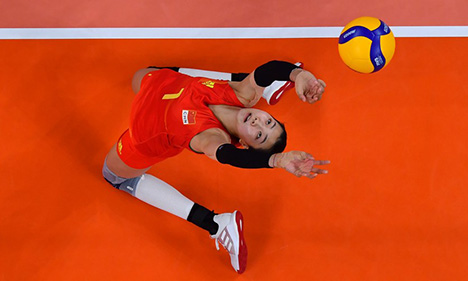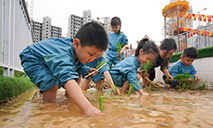Chinese astronauts return with six-month space station mission accomplished
Three Chinese astronauts of the Shenzhou-13 manned spaceship have completed their six-month space station mission and returned to Earth safely on Saturday.
The mission marks that China has completed the verification of key technologies of its space station, and also sets a record for Chinese astronauts' duration in orbit.
This year, China will complete the in-orbit construction of its space station.
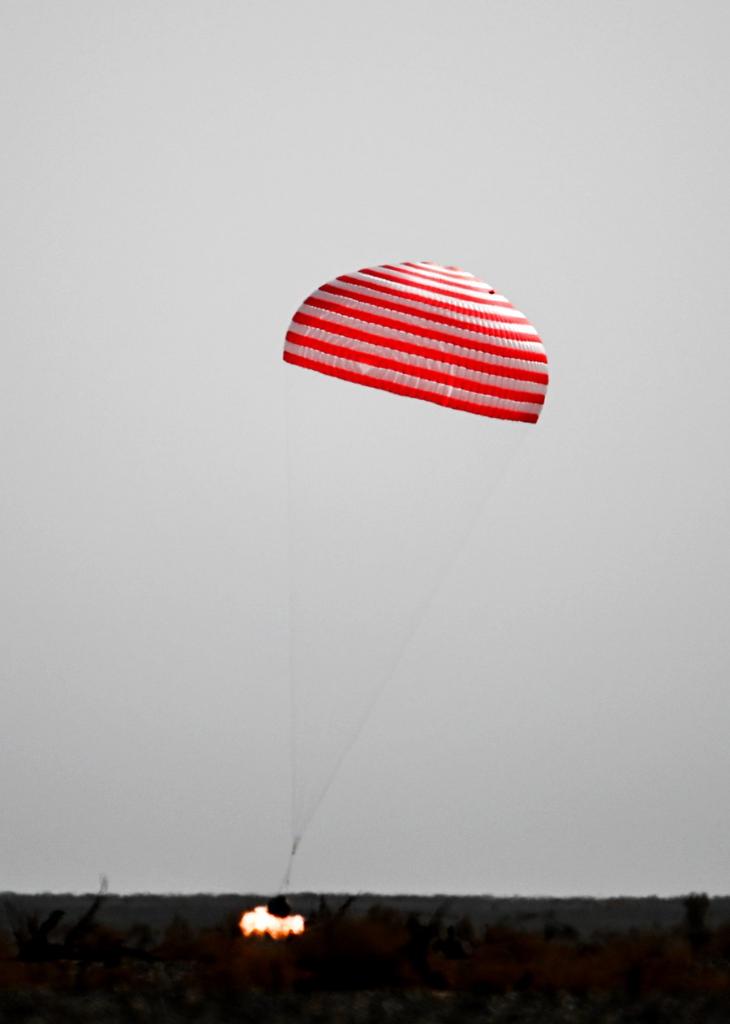
The return capsule of the Shenzhou-13 manned spaceship lands successfully at the Dongfeng landing site in north China's Inner Mongolia Autonomous Region, April 16, 2022. (Xinhua/Lian Zhen)
Three Chinese astronauts of the Shenzhou-13 manned spaceship have completed their six-month space station mission and returned to Earth safely on Saturday.
The mission marks that China has completed the verification of key technologies of its space station, and also sets a record for Chinese astronauts' duration in orbit, said the China Manned Space Agency (CMSA).
Shenzhou-13's return capsule, carrying astronauts Zhai Zhigang, Wang Yaping and Ye Guangfu, touched down at the Dongfeng landing site in north China's Inner Mongolia Autonomous Region at 9:56 a.m. (Beijing Time).
The Shenzhou-13 manned mission was a complete success, the CMSA announced.

Astronaut Zhai Zhigang is out of the return capsule of the Shenzhou-13 spaceship at the Dongfeng landing site in north China's Inner Mongolia Autonomous Region on April 16, 2022. (Xinhua/Lian Zhen)
The trio were carried out one by one by ground workers and placed onto chairs in front of the capsule. They looked relaxed and waved to the ground crew.
"Welcome back home," people cheered for the trio and raised their cameras to capture the historic moment.
"It is the power and strength of our country that built the high-flying space station. I am proud of my great motherland," Zhai, the mission commander, told the state broadcaster CCTV in a live program.
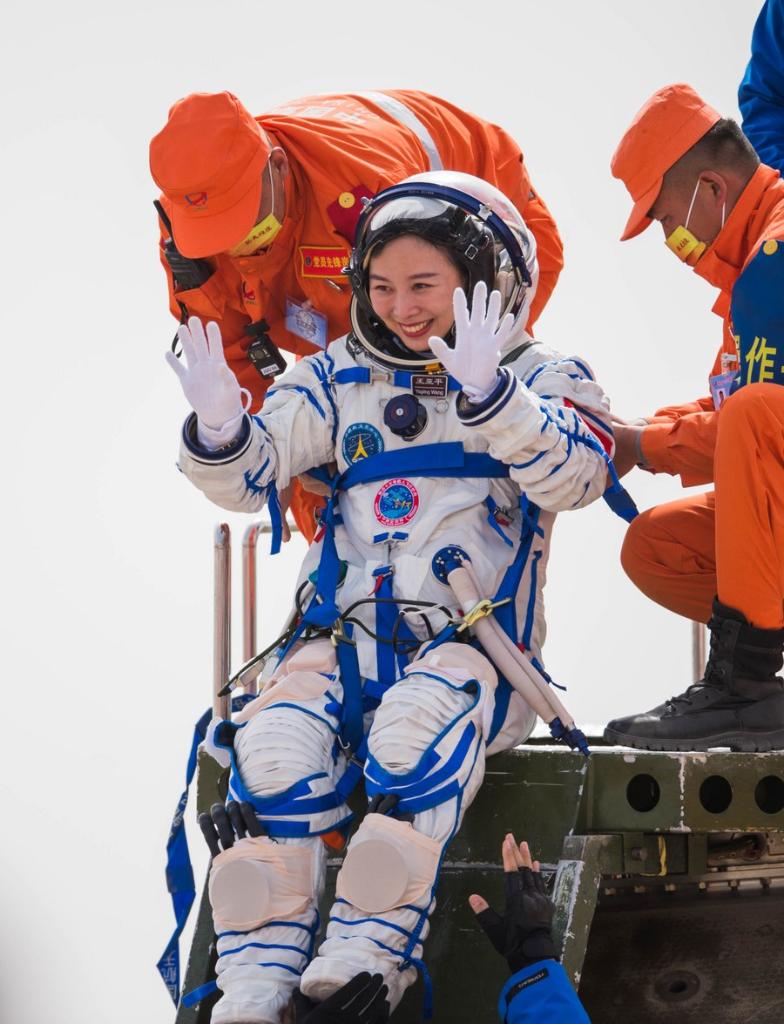
Astronaut Wang Yaping is out of the return capsule of the Shenzhou-13 spaceship at the Dongfeng landing site in north China's Inner Mongolia Autonomous Region on April 16, 2022. (Xinhua/Lian Zhen)
Wang, first female to China's space station, said she is very happy to return to the motherland and wants to tell her 5-year-old daughter that "her stars-picking mom is back."
Ye, a newcomer to space, said that he has realized his dream of flying into space.
The return capsule separated from the spaceship's orbiting capsule at 9:06 a.m. under the command of the Beijing Aerospace Control Center. The braking engine of the return capsule was ignited at 9:30 a.m., followed by the separation of the return capsule from the propelling capsule.
After the return capsule landed successfully, the ground search team arrived at the landing site. The medical personnel confirmed that the astronauts were in good health.
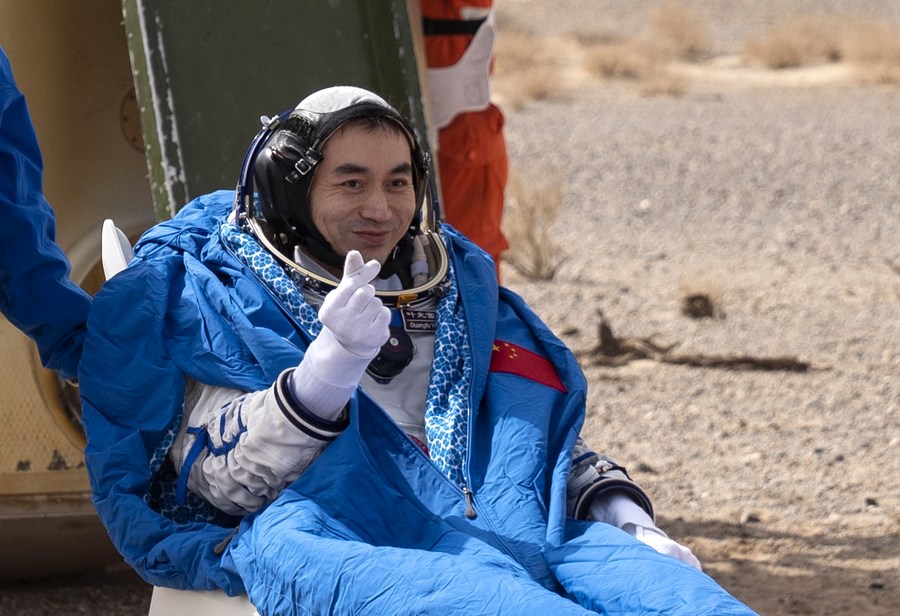
Astronaut Ye Guangfu is out of the return capsule of the Shenzhou-13 spaceship at the Dongfeng landing site in north China's Inner Mongolia Autonomous Region on April 16, 2022. (Xinhua/Cai Yang)
From separating from the space station core module to return to Earth, the journey took only over nine hours, the first time for a Chinese manned spacecraft to use the "rapid return mode." It shortened the flight mainly by reducing traveling circles around the orbit, according to the CMSA.
The Shenzhou-13 spaceship was launched from the Jiuquan Satellite Launch Center in northwest China on Oct. 16, 2021, and later docked with the space station core module Tianhe.
During their stay in Tianhe, the crew conducted a number of scientific and technological experiments, including manual remote operation and module transfer supported by the robotic arm.
They performed extravehicular activities (EVAs) twice during the mission, in November and December respectively.
The first EVAs, performed by Zhai and Wang, took approximately 6.5 hours. Wang's EVAs made her the country's first female astronaut to leave footprints in outer space.
Zhai and Ye carried out EVAs for the second time, completed tasks such as lifting panoramic camera and testing goods transport in about six hours of EVAs.
The EVAs further tested the function and performance of the core module airlock cabin, extravehicular suit and mechanical arm, and assessed the technologies related to EVAs, the coordination of astronauts inside and outside the space station, and the coordination between space and Earth.

Students attend a livestreamed popular-science lecture given by Chinese astronauts from China's space station Tiangong, at the China Science and Technology Museum in Beijing, capital of China, March 23, 2022. (Xinhua/Guo Zhongzheng)
The crew members delivered two live classes from the space station, on Dec. 9 and March 23, respectively.
In the classes, they conducted various scientific experiments, such as the crystallization of supersaturated solution, a liquid bridge demonstration, water-oil separation and throwing objects under the zero-gravity condition, amazing numerous students on the ground.
In the second class, the trio expressed their expectations for the students on Earth. "We hope you will continue to gain scientific knowledge and explore the mysteries of science. The future space station is waiting for you guys," Wang said.
The six-month mission also saw Shenzhou-13 crew members celebrate traditional Chinese festivals in space. The trio became the first Chinese to spend the nation's most important festival -- the Chinese Lunar New Year -- in outer space.
They extended their Spring Festival greetings in a video released by the CMSA on New Year's Eve. They wished the motherland and all Chinese people prosperity.

Astronaut Wang Yaping receives flowers from her daughter on her arrival in Beijing, capital of China, April 16, 2022. (Xinhua/Tian Dingyu)
With five launches, including two crewed missions, China completed the technology verification phase of its space station program.
This year, China will complete the in-orbit construction of its space station. It has planned six launch missions, including the launching of two lab modules Mengtian and Wentian, two cargo crafts Tianzhou-4 and Tianzhou-5, and two crewed missions Shenzhou-14 and Shenzhou-15.
Photos
Related Stories
- Chinese tracking vessel sails to Pacific Ocean for monitoring missions
- Evidence of wind, possible water erosion found on Mars: study
- Saudi, Chinese firms sign deal on space technologies, satellites, AI cooperation
- Tiangong scheduled for completion this year
- China to build new glories on past achievements in space exploration
- China establishes deep space exploration laboratory
- Sino-European joint space mission conducts magnetometer extension test
- Commentary: China welcomes cooperation on space endeavor
- China to make 6 human spaceflights, rocket's maiden flight in 2022
- China's space exploration unlocks deeper understanding of universe
Copyright © 2022 People's Daily Online. All Rights Reserved.







